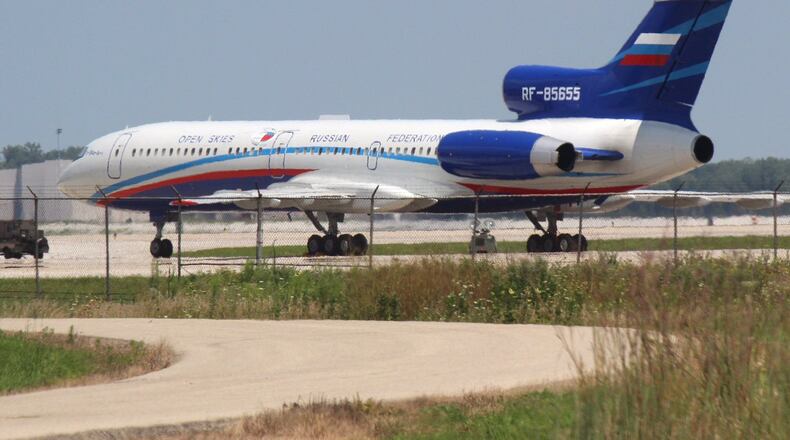The 1992 treaty allowed more than 30 signatory countries to fly above each other’s military installations and other areas.
The OC-135B planes that flew American crews in the Open Skies flights were based at Offutt Air Force Base, Nebraska.
But more than one key Wright-Patterson mission had an important role in those treaty flights. The National Air and Space Intelligence Center (NASIC) at Wright-Patterson has a film processing facility that could handle the 5-inch-wide rolls of black-and-white film the cameras on the OC-135B plane used in the flights.
“This is the only place in the United States that can get this developed,” Defense Threat Reduction Agency spokesman Clem Gaines told the Dayton Daily News in 2005.
“Film from the U.S. Open Skies flights was regularly processed at NASIC,” Michelle Martz, chief of public and legislative affairs at NASIC, said Tuesday.
The work at NASIC is highly classified, so for the processing of Open Skies flight photos, a separate processing center was set up for NASIC, the Dayton Daily News reported in 1999.
Wright-Patt also modified the planes the U.S. used in the flights. The planes were essentially heavily modified WC-135 planes, a version of the KC-135 tanker jet used for weather research flights.
At one point in the late 1990s, Wright-Patterson was one of just three American bases where Open Skies flights were permitted to begin and end.
U.S. Rep. Mike Turner, R-Dayton, has advocated withdrawing from the treaty.
“Congress has heard directly from U.S. officials that Russia is in violation of the Open Skies Treaty,” Turner said in a recent statement. “As I said when we withdrew from the INF Treaty: treaties do not work when only one party is complying. House Democrats in this year’s defense bill said, ‘The United States should forcefully address Russian violations of its obligations under the Open Skies Treaty.’ We all agree that Russia is not in compliance with this treaty, and therefore this withdrawal should be widely supported.”
In March 2020, Turner, with other members of the House Armed Services Committee and House Permanent Select Committee on Intelligence, sent a letter to the Trump administration urging an exit of the U.S. from the agreement.
The Wall Street Journal quoted an unnamed U.S. official Sunday as saying that the OC-135B planes — a four-engine jet that looks like a Boeing 707 airliner — are being designated as “excess defense articles,” meaning they can be given to other nations at reduced cost.
“We’ve started liquidating the equipment,” the official told the Journal. “Other countries can come purchase or just take the airframes. They are really old and cost-prohibitive for us to maintain. We don’t have a use for them anymore.”
About the Author

